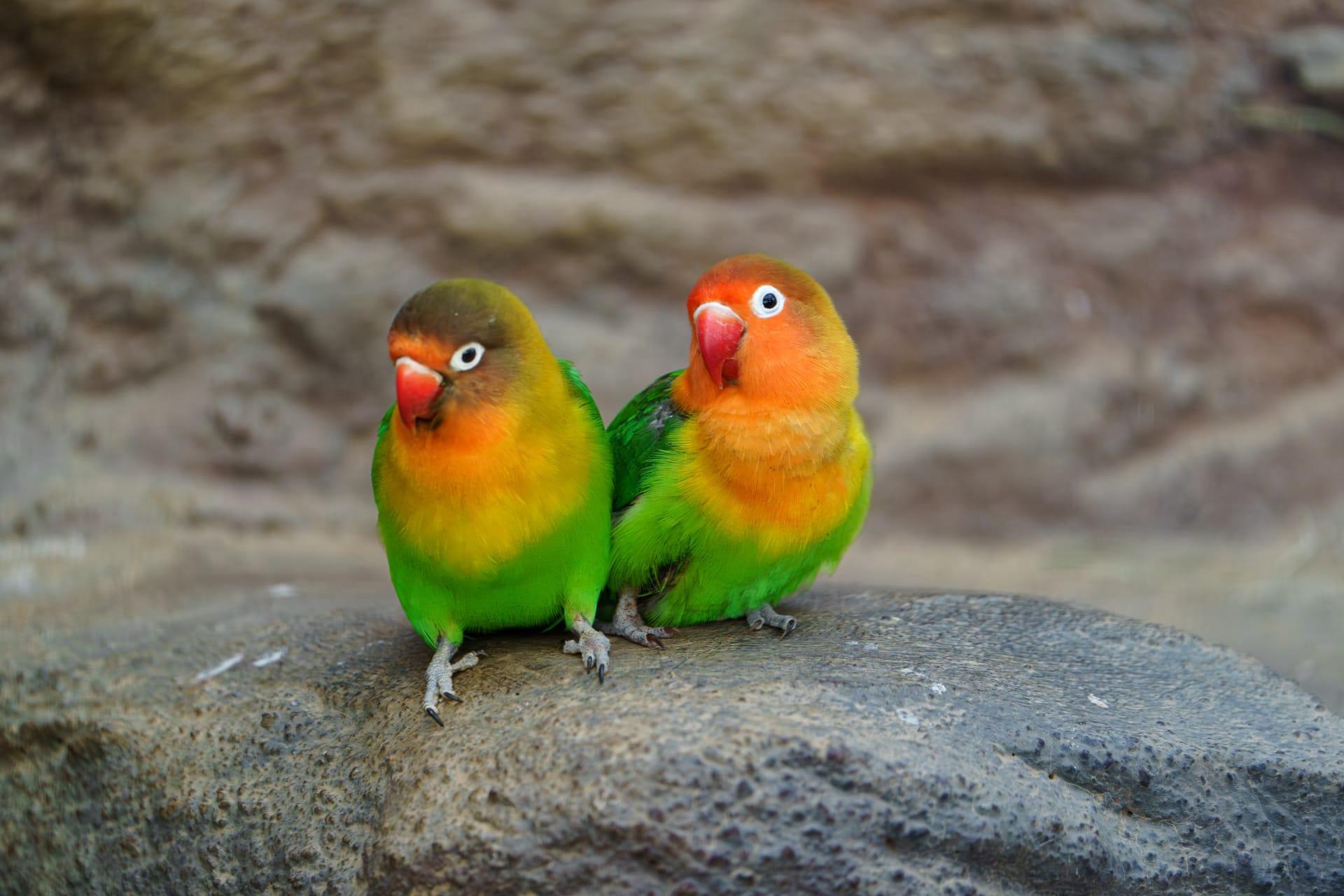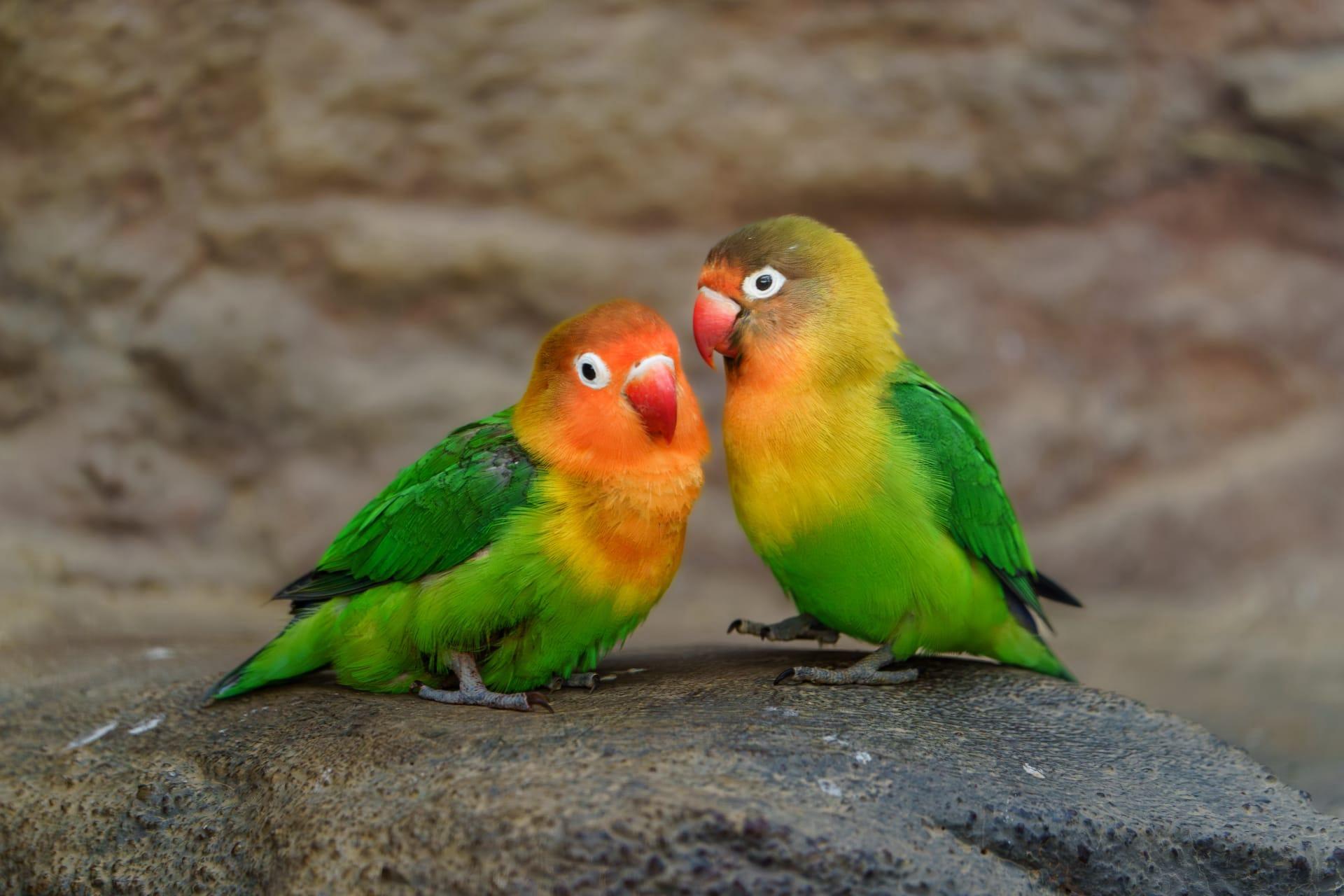Lovebird Characteristics
- Home /
- Mini Encyclopedia /
- Animal /
- Lovebird Characteristics
1
Lovebirds, captivating for their vivid colors and endearing behaviors, are small parrots native to Africa. Measuring about 6 inches in length, they are renowned for their stout build and a short rounded tail. These petite birds typically weigh between 40 to 60 grams. Lovebirds boast a lifespan that can stretch up to 15 years in captivity, a testament to their resilience and adaptability.
The most remarkable organ of a Lovebird is its beak. Strong and hooked, this beak is not just for eating; it's a multifunctional tool. The upper part is curved downwards, enabling them to crack open seeds, their primary diet. This beak is also a dexterous instrument for foraging, climbing, and even as a means of affectionate interaction with their mates or caretakers.

2
Question: "Why do Lovebirds often seem to nibble or 'beak' their human caretakers?"
Answer: This nibbling behavior is a form of social interaction for Lovebirds. In the wild, they use their beaks to groom and show affection to their flock members. When a Lovebird gently nibbles or 'beaks' a person, it's often a sign of trust and affection. However, the intensity of this behavior varies with each bird. It's essential for caretakers to distinguish between gentle nibbling and more forceful biting, which could indicate stress or discomfort in the bird.

3
Lovebirds are agile and active birds, known for their swift and direct flight. In the wild, they can reach speeds up to 35 miles per hour, showcasing their agility and quick reflexes. This speed helps them escape predators and navigate through dense foliage in their natural habitats.
As for their hunting prowess, Lovebirds primarily feed on seeds, fruits, and vegetables. They have a keen sense of finding food sources, often foraging in groups. Their strong beak plays a crucial role in cracking open hard-shelled seeds, their favorite food. Interestingly, they also consume small insects occasionally, showcasing their adaptability in varied dietary habits.

4
Lovebirds inhabit a range of environments across sub-Saharan Africa. They thrive in both arid and moist regions, showcasing remarkable adaptability. Some species are found in wooded areas, while others prefer open grasslands or areas near human settlements. This adaptability to different environments has contributed to their survival and popularity as pets.
In terms of reproduction, Lovebirds are monogamous, often forming strong bonds with their partners. They exhibit unique nesting behaviors, with some species known to weave intricate nests using twigs and leaves. Females lay between 3 to 6 eggs per clutch, which are incubated for about 23 days. Both parents actively participate in rearing the chicks, who become independent around 6 weeks of age.

5
Book: "The Lovebird Compendium" by Alex Gough, published in the United States in 2000. This book is a comprehensive guide, covering various aspects of Lovebird care, behavior, and breeding. Gough, an avian expert, delves into the different species of Lovebirds, their dietary needs, and how to create a stimulating environment for these energetic birds.
Book: "Lovebirds: Owners Manual" by Dirk Van den Abeele, published in the United Kingdom in 1995. Van den Abeele, a renowned ornithologist, provides insights into the fascinating world of Lovebirds. The book discusses the natural history of these birds, practical advice for keeping them as pets, and detailed information on their breeding and genetics. It's a valuable resource for both novice and experienced bird enthusiasts.